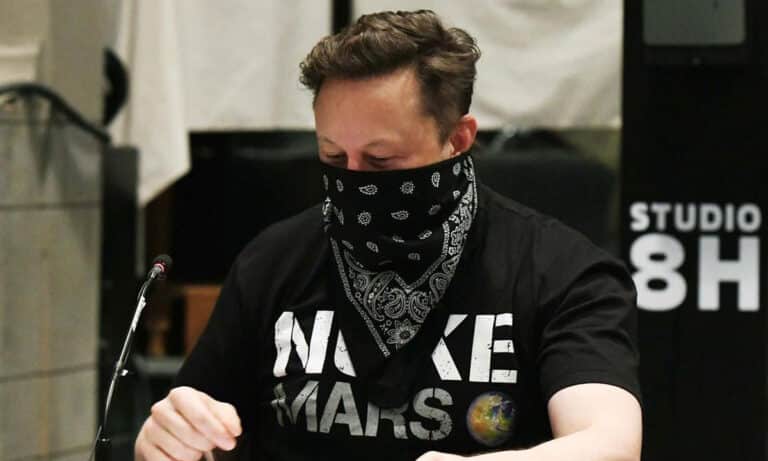Elon Musk is teasing his theory to ‘nuke Mars’ again. Here’s how it would work
Elon Musk has historically been in favour of colonising Mars; in fact, he’s never shied away from it. Among other proposed methods to make the planet habitable for humans is the possibility to nuke it, which Musk seems hell-bent on, cheekily teasing the idea once again. What he actually means by “nuking” it is to terraform Mars—a deliberate modification of the planet’s environment to make it fit for humans.
The teasing of this method came after @stats_feed tweeted yesterday, “While Mars temperatures at the equator can reach as high as a balmy 35 degrees Celsius (95 degrees Fahrenheit) in the summer at midday, the average temperature on the surface is -63 degrees Celsius (-82 degrees Fahrenheit), and can reach as low as -143 degrees Celsius (-226 degrees Fahrenheit) during winter in the polar regions.” Musk cheekily replied to the tweet saying, “Needs a little warming up.”
Needs a little warming up
— Elon Musk (@elonmusk) September 19, 2021
This is not the first time the billionaire has teased the idea; in fact, there is a well documented timeline of his comments on the matter. His theory was first made known back in 2015 after Musk appeared on The Late Show With Stephen Colbert and described that the “fixer-upper” planet could be warmed up the “fast way” by “drop[ping] thermo-nuclear weapons over the poles,” to which Colbert responded calling him a “supervillain.” Later on 16 August 2019, Musk famously tweeted, “Nuke Mars!” later adding “T-shirt soon.” As promised, t-shirts did indeed come soon after.
The ‘real life Tony Stark’ later clarified his comments made on the talk show at an event held that same year for SolarCity—one of the largest solar energy companies in the US owned by Musk. He’s not looking to actually nuke the surface of the planet, just the sky over the poles every few seconds, he clarified. I’m not sure that’s any better, Musk… The idea behind this proposed method would be to form “two tiny pulsing suns” over these poles. “A lot of people don’t appreciate that our Sun is a large fusion explosion,” he explained.
Following his 2019 comments, the Tesla founder did his best to respond to scientific queries on this plan, making me think he is probably prepared to go to any lengths necessary to expand and explore this method. A 2020 Russian news agency TASS article—whereby SpaceX’s terraforming Mars strategy was questioned by a Russian space official—was shared with Musk via Twitter. The official stated, “For a thermonuclear explosion on Mars’ pole, one of the plans of SpaceX, to have tangible results, more than 10,000 launches of missiles that can carry the largest payloads and are being developed now are needed.”
To which Musk replied, “No problem.”
Just shy of a year later, that previously mentioned t-shirt made a criticised appearance. In an image posted and shared by Saturday Night Live (SNL) in May 2021, to promote the SpaceX CEO’s controversial hosting gig, Musk was seen sporting a T-shirt that read “Nuke Mars.” The picture only swelled the complaints against the show and Lorne Michaels—the show’s executive producer—for selecting Musk for the job.
— Saturday Night Live - SNL (@nbcsnl) May 6, 2021
So Musk’s been in favour of it and his latest tweet seems to showcase that he still is (so much so that it’s become a meme at this point) but what exactly is the ‘science’ behind his strategy? The tiny ‘suns’ that the dropping of thermonuclear weapons would form—according to Musk—would proceed to warm the planet and transform any frozen carbon dioxide into gas. Essentially, the problem that we have on Earth, with CO2 warming up our planet, is what would happen in the case of Mars. The more CO2 present in the atmosphere of the planet, the hotter its surface would become.
Such a mission is incredibly complicated, not scientifically certain and likely impossible to come to fruition but Musk’s blasé response to call it a “little warming up” is another in a long list of his “supervillain” tendencies.





